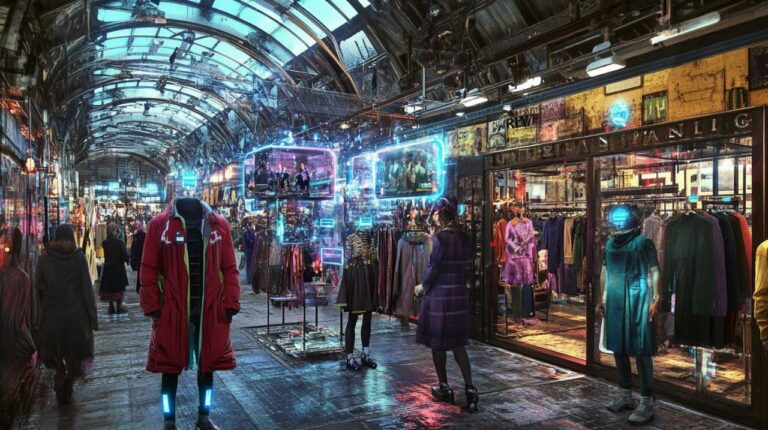Stepping into the sprawling Marché aux Puces de Saint-Ouen, often called simply Clignancourt, feels like entering a living museum where fashion history unfolds across seven hectares of carefully curated stalls. Established officially in 1885, this iconic Parisian destination has evolved from humble 19th-century origins into the world's largest antique market, drawing between 120,000 and 180,000 visitors each weekend who come seeking everything from rare designer garments to forgotten textile treasures. For those captivated by the romance of pre-loved clothing and the sustainability of vintage shopping, this market at Porte de Clignancourt offers an unparalleled journey through decades of style.
Navigating the Vintage Fashion Treasures of Clignancourt
The sheer scale of Les Puces de Saint-Ouen can feel overwhelming at first glance, with over 2,500 stalls spread across multiple distinct sections, each possessing its own character and specialisation. Fashion enthusiasts should plan their visits for Saturday or Sunday when the majority of vendors are present and the atmosphere buzzes with energy. Accessible via Metro Line 4 to Porte de Clignancourt, the market operates from nine in the morning until six in the evening on Saturdays, starting slightly later on Sundays at ten. Mondays see reduced hours from eleven until five, though many stallholders close for lunch, making weekend visits decidedly more rewarding. This timing consideration becomes crucial when searching for those perfect pieces that blend historical authenticity with contemporary wearability, something enthusiasts of online fashion trends article discussions frequently seek in physical vintage markets.
The best stalls for designer vintage pieces
Within the vast expanse of Saint-Ouen, certain sections have earned particular reputations among dedicated vintage fashion collectors. Marché Paul Bert Serpette stands as the essential destination for those pursuing designer vintage fashion, where discerning vendors display carefully authenticated pieces from legendary fashion houses. Here, garments that once graced Parisian runways decades ago find new life, their quality construction and timeless silhouettes proving why investing in heritage pieces transcends fleeting seasonal trends. The atmosphere differs markedly from Marché Biron, which caters to those seeking high-end antiques and 18th-century artwork alongside elegant furnishings, though occasional exceptional textile pieces do surface among the refined offerings. Meanwhile, Marché Dauphine attracts a younger, more eclectic crowd with its mix of mid-century furniture, rare books, and vinyl records, where vintage accessories and statement jewellery often complement the broader selection.
Hidden gems: finding authentic period clothing
Beyond the well-trodden paths of the major sections lies Marché Vernaison, where patience and a keen eye can uncover authentic period clothing tucked between postcards and charming collectibles. This section rewards those willing to sift through densely packed stalls, where garments from various eras might hang alongside vintage trinkets, creating an atmosphere more akin to treasure hunting than conventional shopping. The vendors here often possess deep knowledge about their stock, sharing stories about garment origins and previous owners that add layers of meaning to each purchase. Authenticity remains paramount when navigating these spaces, particularly as the market's international reputation means both genuine articles and clever reproductions coexist. Examining construction techniques, fabric quality, and period-appropriate details becomes essential, skills that develop through repeated visits and conversations with experienced dealers who can distinguish a genuine Twenties beaded dress from a modern interpretation.
Building a sustainable wardrobe through flea market finds

The environmental implications of fashion consumption have pushed vintage shopping from niche hobby into mainstream practice, with Clignancourt market serving as a tangible alternative to fast fashion cycles. Each garment purchased here represents not merely a style choice but a conscious decision to extend the lifecycle of quality clothing whilst reducing demand for new production. The market's enduring popularity, attracting visitors from across the globe to this corner of Paris, demonstrates growing awareness that sustainable fashion need not compromise aesthetic ambition. Many of the pieces available at Saint-Ouen have already survived decades, their continued existence testament to construction quality that contrasts sharply with disposable contemporary garments designed for brief seasonal relevance.
Quality over quantity: investing in lasting fashion
Walking through the various sections of Les Puces de Saint-Ouen reveals an essential truth about pre-digital era clothing: garments were constructed to endure. The vintage designer pieces at Marché Paul Bert Serpette showcase hand-finished seams, quality linings, and fabric weights that justify their premium positioning even decades after original purchase. This approach to acquisition, prioritising fewer exceptional pieces over numerous mediocre items, aligns with evolving attitudes toward wardrobe building that emphasise longevity and versatility. The initial investment in a perfectly tailored vintage coat or an impeccably preserved designer dress often proves more economical over time than repeatedly replacing cheaper alternatives that deteriorate rapidly. Vendors at the market understand this perspective, pricing their finest pieces to reflect both historical significance and continued usability, creating a marketplace where fashion history holds tangible commercial value.
Styling vintage discoveries for modern life
The true art of vintage fashion lies not in creating period-accurate costumes but in seamlessly integrating historical pieces into contemporary wardrobes. A silk blouse from the Seventies pairs effortlessly with modern denim, whilst a structured Eighties blazer can transform a simple dress into a statement ensemble. The challenge and creativity come from mixing eras and styles in ways that feel fresh rather than nostalgic, allowing each vintage piece to function as a unique accent within broader contemporary styling. Accessories discovered at Clignancourt often serve as ideal entry points for those tentative about committing to full vintage garments, with scarves, belts, and jewellery from Marché Vernaison adding character without overwhelming modern outfits. After hours spent navigating the market's offerings, many visitors retreat to nearby Ma Cocotte restaurant to review their acquisitions and plan future styling possibilities, continuing the day's fashion focus in more comfortable surroundings. The practical consideration of caring for vintage textiles becomes part of the ownership experience, with hand washing, careful storage, and occasional repairs maintaining these garments for future generations whilst deepening the connection between wearer and clothing in ways rarely achieved with mass-produced alternatives.







